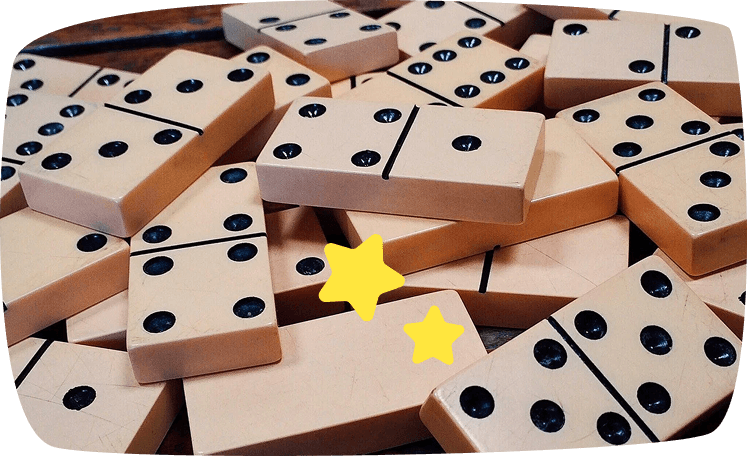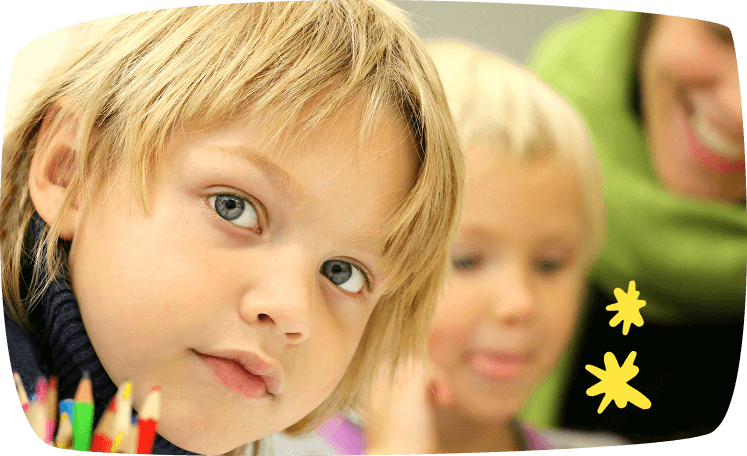Need game ideas for 6–7 year olds? This guide features over 25 enjoyable, age-appropriate activities to help kids improve attention, creativity, and fine motor coordination. From simple crafts and board games to movement-based challenges, each activity promotes learning through play.
Playing with a child is central to childcare, especially at ages 6 and 7. At this stage, children are not only learning to read and write, but also managing their emotions, understanding rules, and developing their personalities. Games help them process school lessons, explore their creativity, and develop social skills such as teamwork and coping with defeat. If, as Maria Montessori said, “play is the work of the child,” then the carer’s role, be it a parent or a babysitter, is to play with a purpose.
Playing together builds trust and forms a special bond. Sometimes, let the child lead or change the rules, as long as everyone agrees. If they’re bored, switch to a different activity. Teach them the importance of rules, but also the creativity in adapting them. Let them win sometimes—but make it convincing, because by age 6, kids can tell if you’re letting them win intentionally.
Children this age tend to stick to what they know, so your job is to introduce variety, such as card games, pretend play, word games, simple crafts, and board games. Each type of play develops different skills. If caring for two kids of different ages, choose games suitable for both. Sibling play is valuable too—little ones learn, older ones teach. Join the game, even if it’s just the two of them. Your presence still matters.
What Games Are Best for 6-Year-Olds?
How do you choose the right game? Don’t rely solely on age guidelines—kids can be full of surprises. A 6-year-old might enjoy a game you thought was too difficult or struggle with something you expected to be easy. The best way to know is to play and adapt.
The games suggested here are also ideal for babysitting. You can do them indoors with just two people and using simple supplies, such as paper, pencils, or recycled materials. You’ll find some movement-based games—great after a day spent sitting at school—and others that help develop early academic skills like language, numbers, and patterns. Before starting the actual games, we begin with some creative project ideas. At 6 or 7, most kids can focus for longer periods and are comfortable with scissors, glue, and drawing, making this a perfect age for mini projects that can last over several days.
Creative Projects for 6–7 Year Olds
These are more than just crafts—they’re genuine creative projects. Collaborating on something together is also a meaningful way to strengthen the bond between the carer and the child. It provides both of you with something unique to work on and look forward to.
Here are a few project ideas:
- Build a dollhouse (or a Ninja Turtle lair, or a farm) out of shoeboxes. Cut out windows and decorate it with fabric scraps, playdough, or watercolour paint.
- Make a collection of paper flags using craft sticks and coloured paper.
- Write and illustrate a storybook or comic together with made-up characters.
- Create a secret diary. Use a hardcover notebook, decorate the cover with stickers or drawings, and tie it with ribbon to “lock” it.
- Make a homemade puzzle. Print or cut out a favourite image, glue it onto cardboard, and cut it into small pieces.
- Build a memory box (or a treasure chest or favourite toy box). Decorate a shoebox with paint or markers, and fill it with special keepsakes like a shell from the beach or a movie ticket stub.
Board Games for 6–7 Year Olds: Timeless Favourites and DIY Fun
Board games are an excellent choice for kids aged 6 to 7. This is the age when many children can sit for longer periods, follow structured rules, and take turns politely. Board games help improve attention span, memory, and strategic thinking.
If the child already knows about board games, you can introduce others that focus on different skills. But if there are no board games at home? Even better—you can make one together. Start with something simple like checkers or Nine Men’s Morris. Draw the board on cardboard and use colored stones or paper cut-outs for game pieces.
If the child doesn’t enjoy DIY activities, look online for printable board games for kids. You’ll find plenty of free options. If you are a babysitter, you could suggest to the parents that they buy a classic board game set or bring one in your babysitting toolkit. It’s a small investment that can save many rainy afternoons. Among the most popular games for kids aged 6 to 7, try classics like Snakes and Ladders, The Goose Game, or Ludo. For something a bit more modern that sharpens visual focus and reflexes, go with Dobble or Halli Galli.

Card Games for Kids
Sometimes, a simple deck of cards is more fun than a room full of toys. That’s why card games are among our top choices for 6–7 year olds. Playing cards helps children develop memory, attention, observation skills, number recognition, and basic math skills like adding small numbers. And don’t forget, just shuffling and dealing cards is great for improving fine motor skills, which kids need to develop good handwriting.
The best card game depends on the child’s age and skills. Some 10-year-olds have never played before, while some 5-year-olds can already count and sort cards. If you’re unsure where to begin, start with simple games. Besides basic matching games like Go Fish or Crazy Eights, here are a few kid-friendly options for two or more players.
- Sevens (also known as Fan Tan)
- Cheat (also called I Doubt It or Bluff)
- Uno (a colourful favourite that teaches turn-taking and colour/number recognition)
- Slapjack (also called Snap or Egyptian Rat Slap)
All of these games help kids practice quick thinking and memory in a fun, social way.
Word and Shape Games for 6–7 Year Olds
If you’re looking for a calmer activity that still keeps a child’s attention, try these games involving words, reading, rhyming, and visual logic. Most only need paper, pencils, or household items like newspapers or printouts. These quiet-time activities are excellent for reinforcing what kids learn in school—without feeling like schoolwork.
- Rhyming Pairs: Create a set of cards with rhyming word pairs (like cat/hat, tree/bee). Printable rhyming decks are available online. Use them for memory games or simple matching challenges.
- Guess What I’m Thinking: Think of an object, animal, or person, and let the child guess what it is by asking only yes-or-no questions.
- Newspaper Sentence Builder: Cut out random words from newspapers—including nouns, verbs, adjectives, and articles. Mix them in a box. Each player has 4–5 minutes to form the longest grammatically correct sentence possible.
- Tangram Challenge: Tangrams are ancient Chinese puzzles made of geometric pieces that form images. Make your own using cardboard or paper, and watch YouTube for inspiration. Then let the child recreate shapes or invent their own.
- Pencil-and-Paper Games: Play timeless favourites like Tic-Tac-Toe, Battleship, Hangman, or category games like “Flowers, Fruits, and Animals.” These build vocabulary, logic, and writing skills.
Active Games for 6–7 Year Olds
After sitting still for hours at school, kids need to jump, run, and move around. But how can you help them stay active indoors without turning your living room into a gym? These movement-based games strike the perfect balance. They allow kids to burn off energy while improving their hand-eye coordination, focus, and self-regulation—all essential skills for learning.
Try these active game ideas at home:
- Obstacle Tray Race: Set up a simple obstacle course using pillows, books, or furniture. The child must carry a tray with a few small items across the course without dropping anything. Make it more challenging by adding more objects or asking them to use only one hand—or even walk with their eyes closed.
- Paper Ball Toss: Turn a cardboard box or laundry basket into a basketball hoop. Use scrunched-up paper balls for safe, quiet play indoors.
- Musical Chairs: A classic game. Dance to music, then sit down as soon as it stops or someone calls out “Chair!” One chair is removed each round. The last person sitting wins.
- Card Toss: Each player throws a playing card, trying to land it on another card already on the floor. If it lands successfully, they collect both. The player with the most cards at the end wins.
If the weather allows, head outside! Check out our article on outdoor games for kids for more active ideas.
Pretend Play and Role Reversal
Even everyday chores can become learning games. This type of pretend play helps kids better understand the world around them. We call it the “I Know How” game. Ask the child to demonstrate (or learn) how to:
– Brew a cup of tea or coffee (using play props)
– Put a pillowcase on
– Mail a letter
– Buy milk at a store
Teaching these simple tasks as a game builds confidence, independence, and self-esteem. It’s also a fun way to bond while helping children feel more capable of managing their daily routines. These are just a few ideas to inspire creative play. Have you tried any of these already? Let us know your favorites—or come up with your own!
Looking for more age-specific activities? Check out:
- Indoor Games for 5-Year-Olds
- Games for 8–10 Year Olds
- 101 Indoor Games
Table of contents
Sitly: Connecting parents & sitters since 2012
In need of a helping hand with the kids, or are you looking for a job with children? Sitly helps parents and babysitters find the perfect match. Sign up, browse profiles, and start connecting today!






 Services
Services